Transport Operator STI Bus AG
With IRMA MATRIX to a reliable service in the Bernese highlands.
Key company data
STI Bus AG is a Swiss transport operator based in the city of Thun.
In 1913 the first tram line of today's STI AG between Steffisburg-Thun-Oberhofen was put into operation. From 1940 the company gradually switched to bus lines and expanded them.
Today STI connects 37 communities with a network of 444 km.
With 86 scheduled buses, the transport company serves 15.7 million passengers annually over a total of 5 million kilometres.

Interview with Marco Rossinelli
Workshop manager: Responsible for the evaluation and introduction/operation of automatic passenger counting (APC) systems
Mr. Rossinelli is a trained automotive diagnostician and has been working in the public transport industry since his apprenticeship time. Today he is the workshop manager of STI Bus AG. Due to his professional education he is very familiar with the electrical side of vehicles. With the introduction of the operations control system in 2012 he assumed responsibility for the technical side of the project and, based on the experience gained from previous projects, led the evaluation of the passenger counting systems.
In addition to servicing its own vehicles STI Bus AG also services third-party vehicles from all over Switzerland.
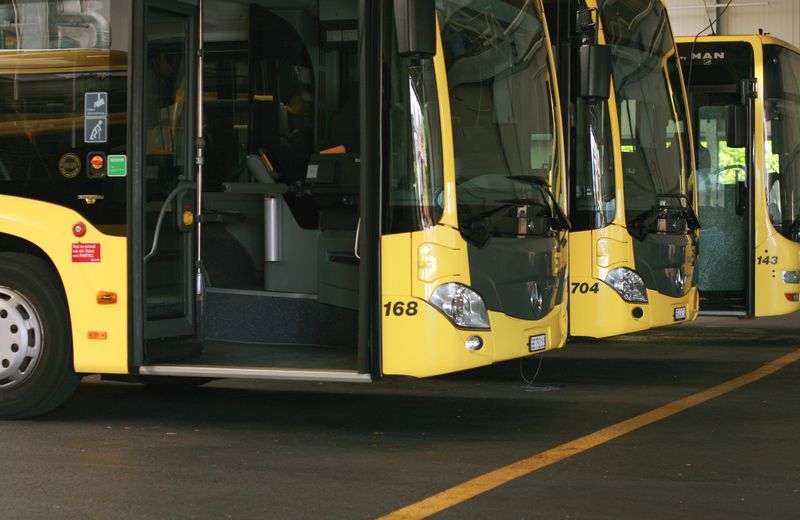
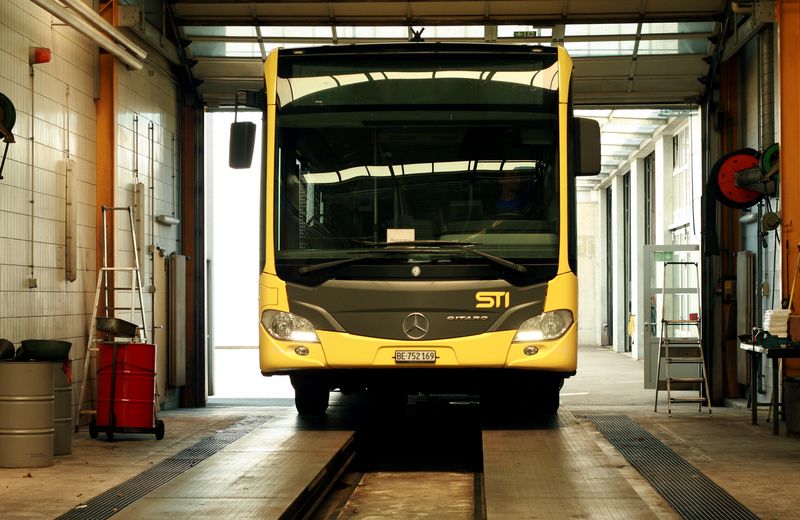
Aside from dispatching the vehicles - as one of his main tasks - Mr. Rossinelli describes the operations control and the automated passenger counting (APC) systems more as an unusual hobby in his position. It is not only after our visit to Thun that we call him a proven expert in the field of APC.
1. The classic starting point
Before the introduction of automatic counting of passengers STI Bus AG had the passenger numbers determined manually. For this purpose, the driver determined the number of boarding people up to the end point at a fixed date each month. The number of passengers always referred to the total distance and not to the stations of the journey. In extensive background work these transport figures were then used for extrapolation. This was accompanied by high personnel and time expenditure. In addition, the figures could not be used for other purposes - which justified the high effort even less.
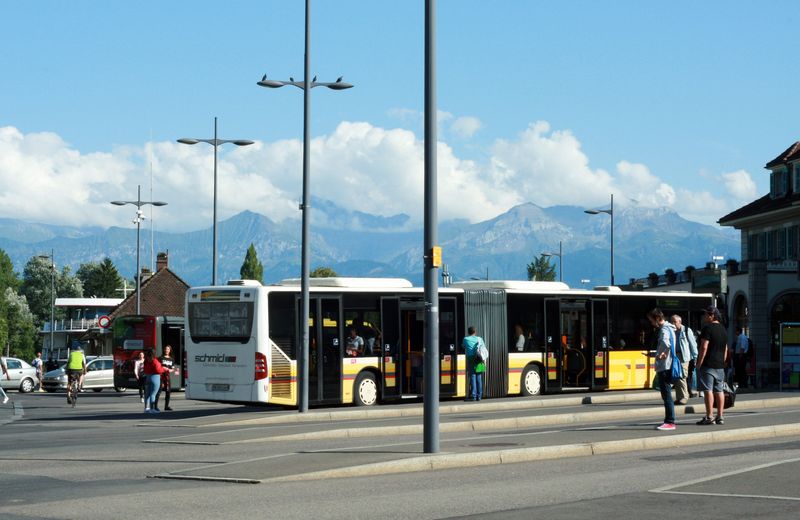
When the company joined the Libero tariff association in 2019, the requirements for proof of passenger kilometres travelled changed. An automatic count to determine the number of people getting on and off at each stop was now explicitly required.
This gave STI the opportunity to integrate capacity planning, dispatching and determining a sensible trip frequency into the requirements for the counting system, so that the passenger numbers could be used efficiently to improve its network.
2. A (nearly) classical solution
STI Bus AG dealt with a wide variety of technologies and manufacturers of passenger counting sensors during an intensive evaluation phase. Thanks to its expertise in electronic equipment and the integration of the individual components into the vehicles, it was possible to formulate some important requirements:
- highest possible quality of the raw data
= offers a clean basis for further processing of the data - One sensor per door
= allows an easy installation - One component
= minimizes the efforts to find faults in the vehicle
In 2013, the transport authority put the control system into operation. The passenger counting system went live in December 2016 in 37 vehicles from different manufacturers. At that time this corresponded to 33% of the entire fleet equipped with APC. In the meantime, all new vehicles have been delivered with passenger counting, and the number of counting vehicles has increased to 49. The STI fleet is therefore constantly modernising and aims to achieve 100% equipment over the coming years.
49 Vehicles
were equipped with IRMA sensors.
In addition to the classic benefits of passenger counts such as revenue distribution, capacity planning and determining a sensible trip frequency, STI also uses the data to compare it with customer complaints or reports. When complaints about overcrowded vehicles are received, the control centre can promptly check whether the passenger's perception actually corresponds to the vehicle's occupancy level - provided it is a “counting” vehicle.
The line is operated with a "MERCEDES Sprinter" and has only 4 stops along the entire route where departure times are fixed. The special feature is that between these stops, it is possible to board and alight anywhere - the residents and visitors of this urban area can thus get to the city centre and back directly from the front door.
In order to enable STI to calculate the passenger kilometres on this route as accurately as possible, 25 additional stops have been invented - in addition to the 4 defined stops - which divide the route into 29 sectors. In this way STI is able to determine the benefit of the route - the service is highly appreciated by the residents.
Why IRMA
The sensors from iris are synonymous with high quality and excellent service. In the in-house test tracks, every single sensor manufactured on site undergoes fixed procedures to ensure that it functions smoothly under a wide range of external conditions. The employees of STI Bus AG were able to see this for themselves during a training course in Berlin. This creates trust in the technology and project support and continues to convince the STI colleagues involved to this day.
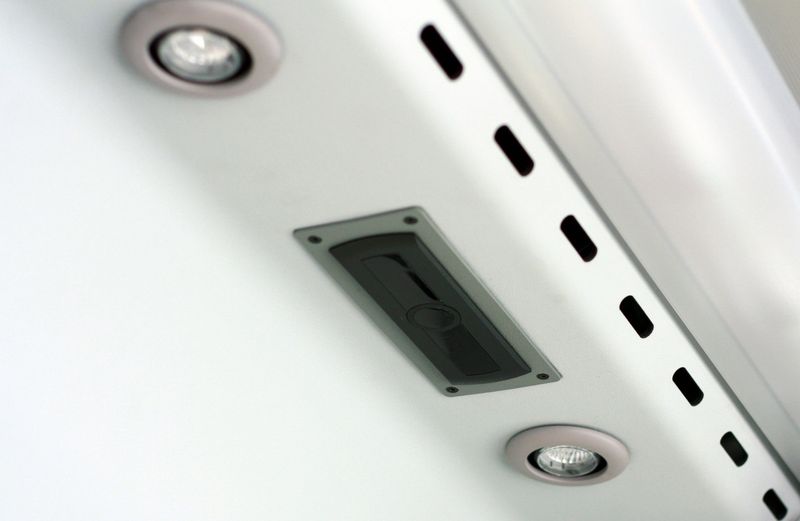
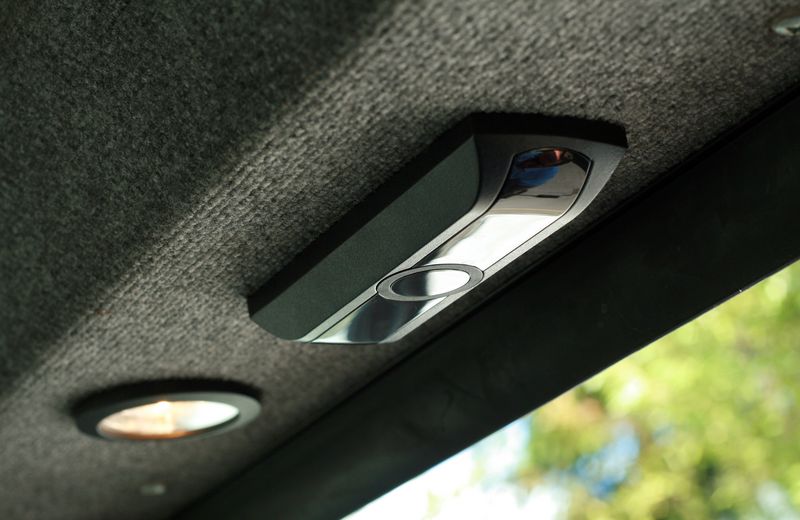
Due to the positive experience in their vehicles, STI Bus AG recommended and implemented the same counting system to Niederhornbahn AG, a gondola lift operator in the region. The special feature is that not the vehicles themselves have been equipped, but the passageway through which passengers reach the cabins. Here, too, precise information on the number of passengers over the entire operating period is expected.


